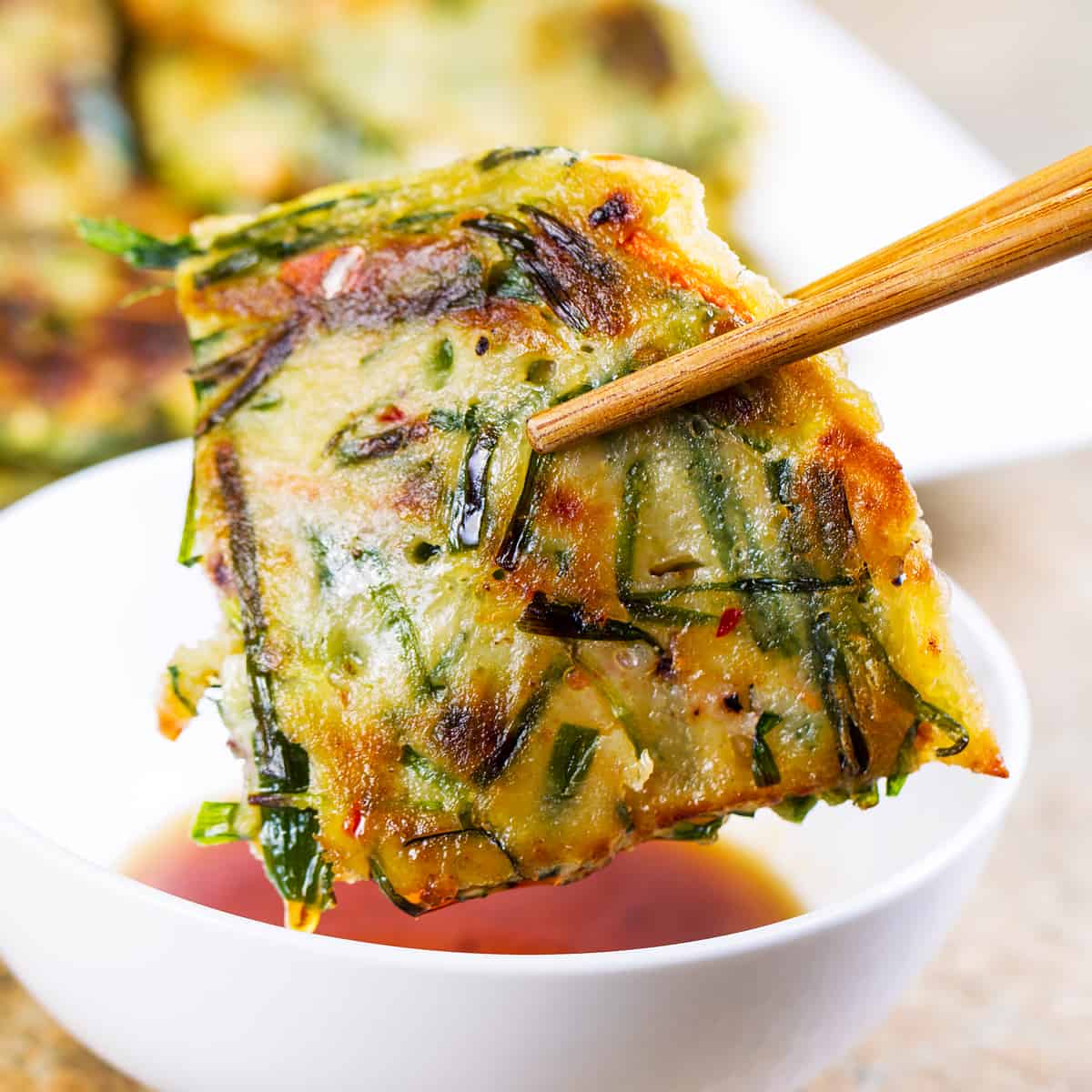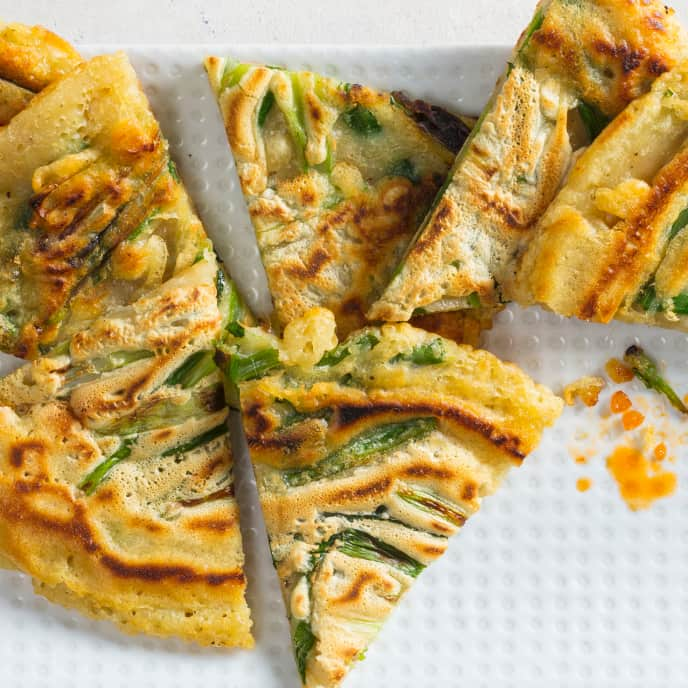Pajeon, a beloved dish in Korean cuisine, transcends mere sustenance to become an experience of flavor, texture, and culture. This savory pancake, typically laden with scallions (pa), boasts a crispy exterior and a tender, flavorful interior. Beyond its gastronomic appeal, pajeon carries a rich history and nutritional value that make it a staple in Korean households and a favorite in restaurants worldwide.
The Origin and Evolution of Pajeon:
Pajeon, rooted in the heart of Korean culinary tradition, reflects the resourcefulness and ingenuity of Korean cooks throughout history. Its humble beginnings can be traced back to the Joseon dynasty (1392–1897), where simple pancakes made from flour and water provided sustenance during lean times. Over the centuries, as Korea’s culinary landscape evolved, so did pajeon. Regional variations emerged, influenced by local ingredients and culinary customs. For instance, Haemul Pajeon, or seafood pancake, gained popularity in coastal regions, incorporating fresh seafood like shrimp, squid, and oysters. Buchu Jeon, made with garlic chives instead of scallions, is another regional variation celebrated for its distinct flavor profile.
Crafting the Perfect Pajeon: Recipe and Techniques:

Mastering the art of pajeon begins with selecting high-quality ingredients and employing proper techniques. The batter serves as the foundation of a good pancake, requiring the right balance of flour, liquid, and leavening agents. Some recipes call for the addition of rice flour or cornstarch to achieve a lighter, crispier texture. Whisking the batter thoroughly ensures a smooth consistency, while incorporating beaten eggs adds richness and structure. When cooking pajeon, achieving the ideal level of crispiness without burning is crucial. This often involves using moderate heat and allowing the pancake to cook until golden brown on both sides. The choice of dipping sauce also plays a significant role in enhancing the overall flavor experience, with options ranging from traditional soy sauce-based dips to spicy gochujang-infused condiments.
Health Benefits of Pajeon:
While pajeon is undoubtedly a delicious indulgence, it also offers several nutritional advantages when prepared thoughtfully. Scallions, the primary ingredient, are a nutritional powerhouse, packed with vitamins, minerals, and antioxidants. They contain allicin, a compound known for its anti-inflammatory and immune-boosting properties. Additionally, scallions are low in calories and high in fiber, making them an excellent choice for weight management and digestive health. When combined with protein-rich seafood or tofu, pajeon becomes a well-rounded meal that provides sustained energy and promotes muscle repair and growth. Moreover, the inclusion of eggs adds essential nutrients like vitamin D, B vitamins, and choline, which are vital for brain health and metabolism.
Cultural Significance and Social Traditions:
Pajeon transcends its culinary role to become a symbol of community, celebration, and shared heritage in Korean culture. It is often enjoyed during festive occasions such as Lunar New Year (Seollal) and Chuseok (Korean Thanksgiving), where families come together to prepare and feast on an array of traditional dishes. The act of making pajeon, from mixing the batter to flipping it on the griddle, fosters a sense of togetherness and teamwork among generations. Additionally, pajeon holds a special place in Korean folklore and superstition, with some believing that consuming it on rainy days can bring good luck and ward off evil spirits.
Modern Interpretations and Culinary Innovations:

In today’s culinary landscape, pajeon continues to evolve, embracing new ingredients, flavors, and presentation styles. Chefs and home cooks alike are experimenting with innovative twists on the classic dish, incorporating global influences and contemporary cooking techniques. For example, Kimchi Pajeon infuses the pancake with the tangy, spicy flavors of Korea’s iconic fermented cabbage dish, adding depth and complexity to each bite. Similarly, Cheese Pajeon incorporates gooey melted cheese for a decadent twist that appeals to cheese lovers. Moreover, with the growing popularity of plant-based diets, vegan and gluten-free versions of pajeon are becoming more prevalent, using ingredients like chickpea flour or tapioca starch as substitutes for traditional wheat flour.
FAQS:
Certainly! Here are some frequently asked questions (FAQs) about pajeon:
- What is pajeon?
- Pajeon is a traditional Korean pancake made with a batter of flour, water or broth, eggs, and scallions. It is typically pan-fried until crispy on the outside and tender on the inside, resulting in a savory and aromatic dish.
- What does “pajeon” mean?
- The word “pajeon” is derived from two Korean words: “pa” meaning green onions or scallions, and “jeon” referring to a type of pancake or griddle cake. Therefore, pajeon translates to “green onion pancake” or “scallion pancake.”
- What are the main ingredients in pajeon?
- The main ingredients in pajeon include all-purpose flour, water or broth, eggs, scallions (green onions), salt, and pepper. Additional ingredients such as seafood (haemul pajeon), kimchi, or vegetables may also be included to add flavor and texture.
- How is pajeon traditionally served?
- Pajeon is typically served as an appetizer, snack, or side dish in Korean cuisine. It is often accompanied by a dipping sauce made from soy sauce, rice vinegar, sesame oil, and sesame seeds. Pajeon pairs well with other Korean dishes and is commonly enjoyed during festive occasions and social gatherings.
- Can pajeon be made gluten-free or vegan?
- Yes, pajeon can be adapted to be gluten-free or vegan by using alternative ingredients. For a gluten-free version, you can substitute wheat flour with rice flour, chickpea flour, or a gluten-free flour blend. To make pajeon vegan, you can omit the eggs and use plant-based milk or water as a substitute for broth.
- How do you store and reheat leftover pajeon?
- Leftover pajeon can be stored in an airtight container in the refrigerator for up to 2-3 days. To reheat, you can pan-fry the leftover slices in a skillet with a little oil until heated through and crispy. Alternatively, you can reheat them in a toaster oven or oven at a low temperature until warmed.
- What are some variations of pajeon?
- Some popular variations of pajeon include:
- Haemul Pajeon: Seafood pancake made with a variety of seafood such as shrimp, squid, and oysters.
- Kimchi Pajeon: Kimchi pancake made with fermented cabbage kimchi, adding a spicy and tangy flavor.
- Buchu Jeon: Pancake made with garlic chives instead of scallions, popular in Korean cuisine.
- Kimchi Seafood Pajeon: Combination of kimchi and seafood in one pancake, offering a unique fusion of flavors.
- Some popular variations of pajeon include:
These FAQs provide an overview of pajeon, its ingredients, serving suggestions, variations, and adaptations to accommodate different dietary preferences.

